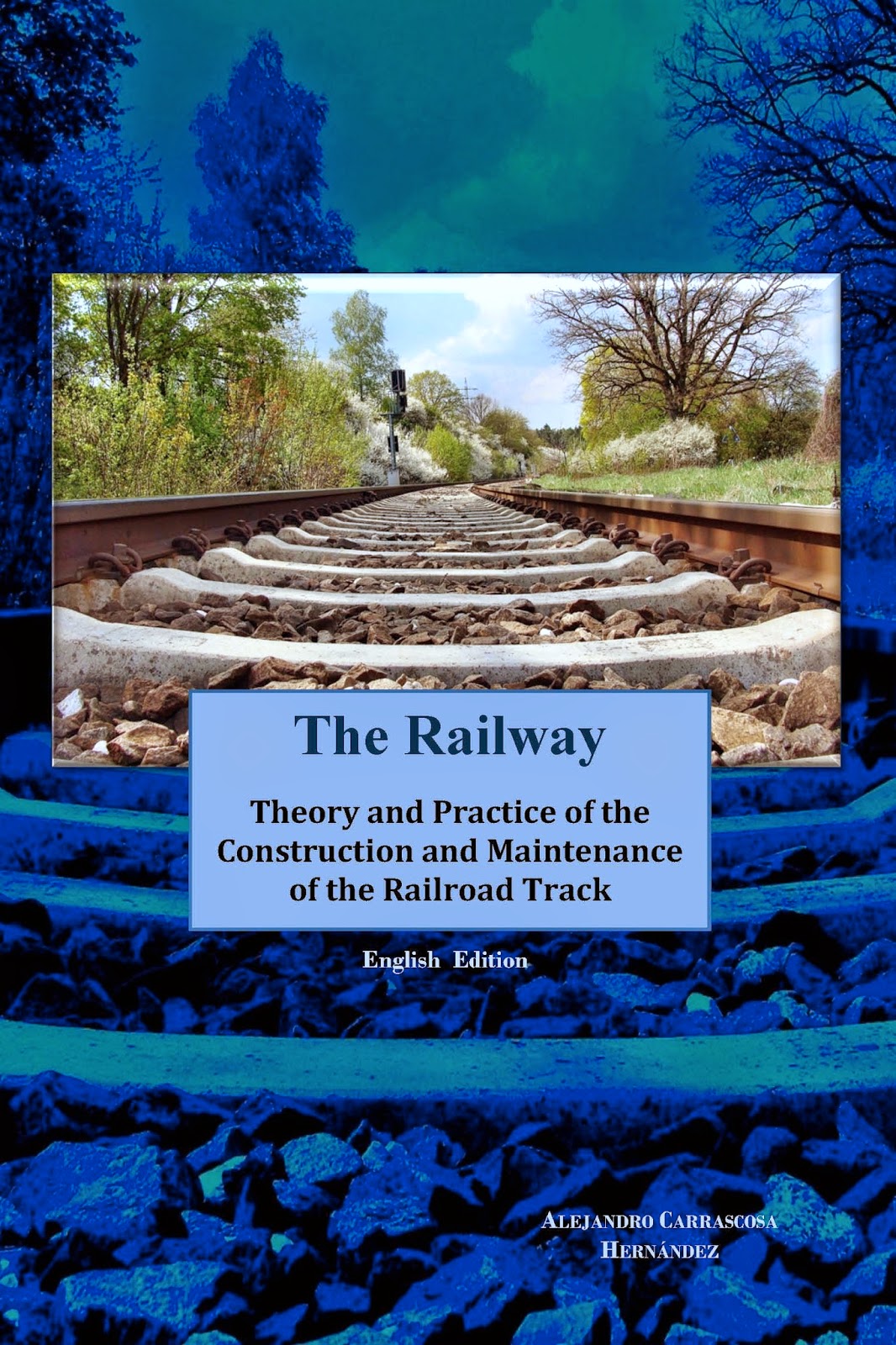The BICONO is a geometrical element composed of two solid
cones, linked by their common base.
If we throw this solid element through two guides of fixed width, we will notice that it will roll with a rocking transversal-movement and a loop longitudinal-movement, always trending to center in the guides’ axis.

- Rolling along parallel guides
- Conicity of Rolling movement
- Very low gravity center
The railway rolls along parallel guides, the wheels are
truncated cone-shaped, and the gravity center is very low. All these features
provide the ensemble a significant stability.
The axles circulate along the straight line tracing a loop
movement:

The axle oscillates due to the conicity of the Wheel and the
existing play between rail and flange, necessary to prevent excessive friction.
The rail is placed with a tilt 1/20 in order to improve the
contact between wheel and rail and to adapt to the conicity of the wheels.
Application to overwidth.-
In the curves, the railroad width will be increased by an overwidth value that will be subject to the curve-radius and axles-typology.
In the curves, the railroad width will be increased by an overwidth value that will be subject to the curve-radius and axles-typology.
In order to allow the axle turn in a curve perpendicularly to
the railroad, and provided that it must cover a longer distance in the outer
rail than in the inner rail, the required radius for each rail must be
different.
According to the Similarity-law of triangles, the following
relation must be fulfilled:
The necessary overwidth to allow the wheels couple with each
radius must result from the following calculation:
This overwidth will allow the vehicle to trace the curve and
the axle to keep permanently perpendicular to the railroad axis, even if the
outer wheel has to cover a longer distance tan the inner wheel, preventing the
inner wheel dragging the outer one to place perpendicular while it turns.
The dragging of the outer wheel triggers or accelerates the
wear of the wheels, as the “undulatory wear”, with a significant deterioration
of the rail head and, as a direct consequence of it, undesirable noises.
The undulatory wear is only caused in curves with short
radius and concrete sleeper, where the railroad width cannot change.
In railroads with wooden sleepers this phenomenon does not
appear because the fasteners that fix the rail to the sleepers budge some
millimeters with the transversal loads of a circulating vehicle.
The overwidths to be used in a railroad, despite they are
mainly subject to the railroad width and the curve radius, are also function of
other secondary factors:
- More or less stiffness in the fastener for the rail and sleeper.
- Axle composition (Bogies, foxed axles, guided axles, independent wheels, etc.)
(In later pages within the Chapter IV.-Tracing of a railroad,
we will study in detail the method for its calculation and distribution over
the curves).
GO TO CHAPTER III - The Camber in the Railway
Full themes in the book -In paper and ebook (Follow the link)
GO TO CHAPTER III - The Camber in the Railway
Full themes in the book -In paper and ebook (Follow the link)
-------------------------------------------------
Teoria del BICONO
El BICONO es un elemento geométrico formado por dos conos unidos por su base.
Si este elemento macizo lo lanzamos por unas guías de ancho fijo, comprobaremos que rodará imprimiendo un movimiento de lazo y tendiendo siempre a centrarse en el eje de las guías.
En este elemento las principales características son :
- Rodadura por guías paralelas
- Conicidad en la rodadura
- Centro de gravedad muy bajo.
En un ferrocarril se rueda por guías paralelas, las ruedas son de forma tronco-cónica, y el centro de gravedad está muy bajo. Todo ello confiere al conjunto una gran estabilidad
Los ejes circulan por la recta describiendo un movimiento de lazo.
Un eje oscila debido a la conicidad de la rueda y a la holgura existente entre el carril y la pestaña , necesaria para evitar excesivos rozamientos.
El carril se coloca con una inclinación de 1/20 para mejorar el contacto rueda-carril y adaptarse a la conicidad de las ruedas.
Aplicación al sobreancho.
En las curvas, el ancho de vía vendrá incrementado por un sobreancho que irá en función del radio de la curva y la tipología de los ejes
Para que un eje gire perpendicular a la vía en una curva, dado que deberá recorrer mayor distancia en el carril exterior que en interior, los radios con los que ruede en uno y otro carril deben ser distintos.
Según la ley de la semejanza de triángulos, se deberá cumplir la siguiente relación:
El sobreancho necesario para que las ruedas se acoplen con uno u otro radio, deberá salir de esta exposición:
En la práctica, los sobreanchos a aplicar en función del radio de la curva los tiene establecidos cada administración y en su cálculo intervienen otros factores:
Mayor o menor rigidez de la fijación del carril
Composición de los ejes ( Bogíes, ejes fijos, ejes guiados, ruedas sueltas, etc.
(Mas adelante trataremos en un capítulo expresamente dedicado al sobreancho el método para su cálculo y la distribución en las curvas)






No hay comentarios:
Publicar un comentario